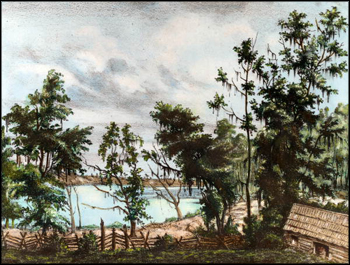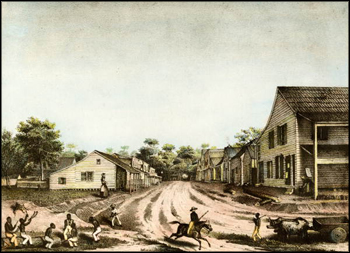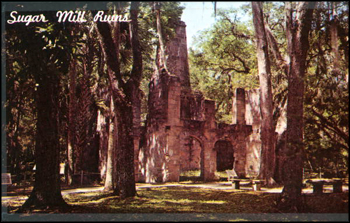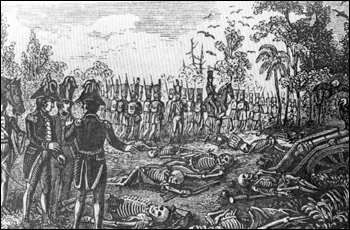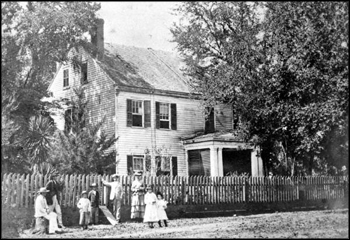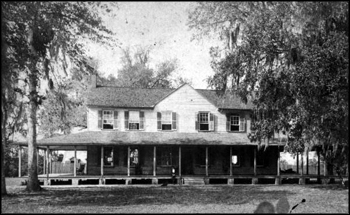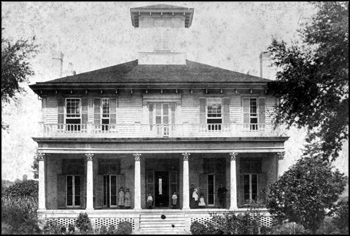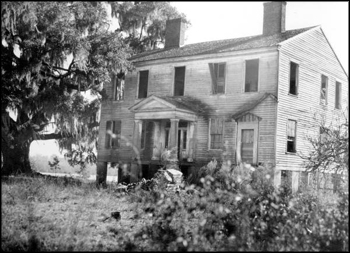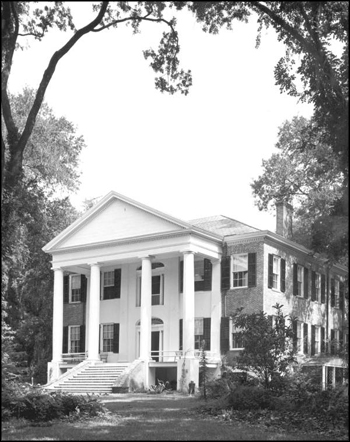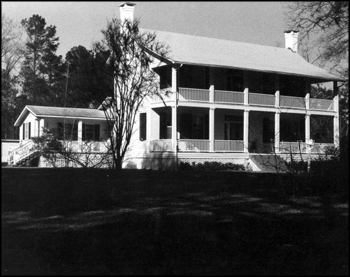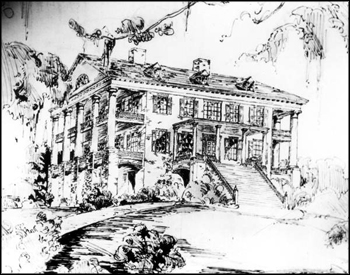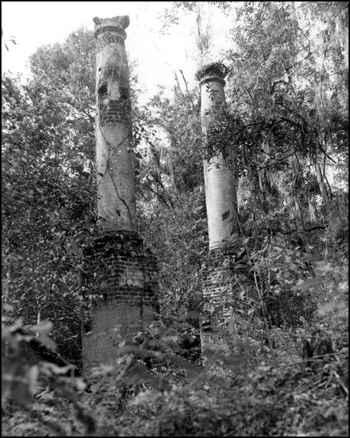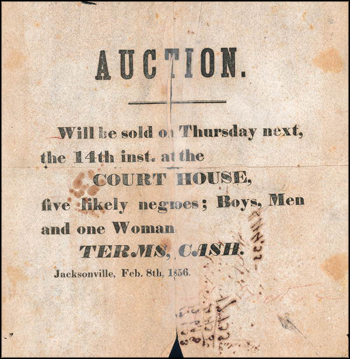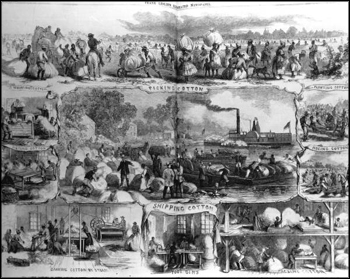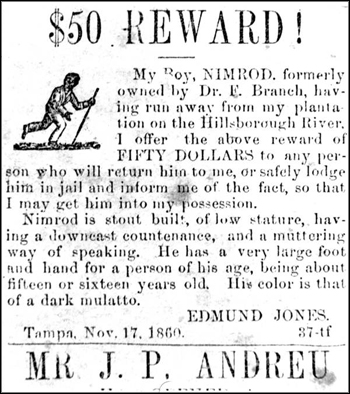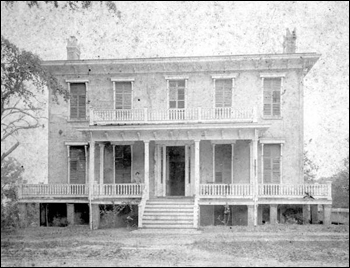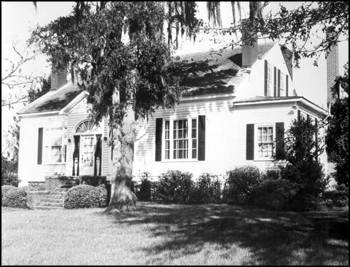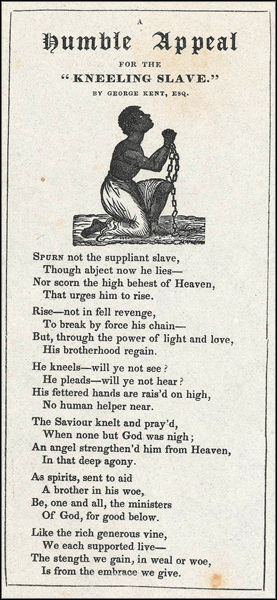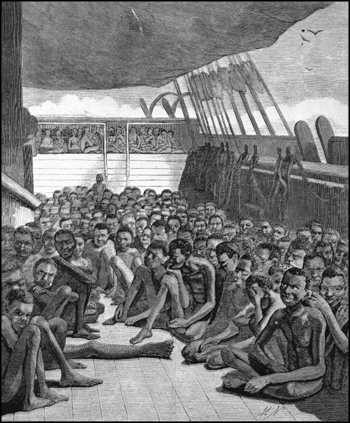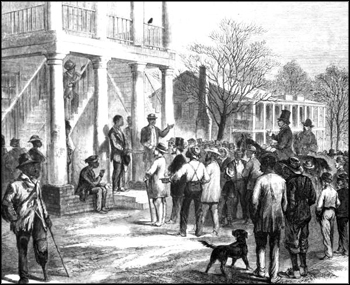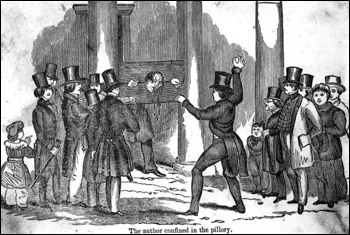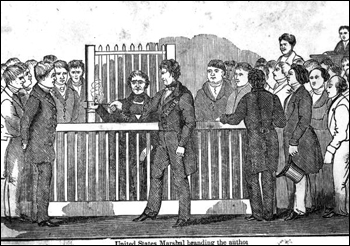Photo Exhibits
Photo exhibits spotlight various topics in Florida history, and are accompanied by brief text intended to place selected materials in historical context.
Plantation Culture
Land and Labor in Florida History
Plantation Slavery in Antebellum Florida
The transfer of Florida from Spain to the United States in 1821 prompted the migration of thousands of American planters into Middle Florida, the region bounded on the west by the Apalachicola River and on the east by the Suwannee.
Cotton became the major cash crop and large numbers of African slaves toiled on plantations owned by the planter elite. On the eve of the Civil War in 1860, enslaved persons made up more than half of Middle Florida's population.
Lithograph of a plantation on Lake Lafayette: Leon County, Florida (1839)
Image Number: RC05086A
Francis comte de Castelnau made this sketch of a plantation while visiting north Florida in the late 1830s.
Lithograph of a residential street scene: Tallahassee, Florida (1839)
Image Number: RC04817A
Francis comte de Castelnau made this sketch while visiting north Florida in the late 1830s. The view is looking east on Jefferson Street from Adams Street.
The Seminole Wars and Plantation Expansion
Plantations spread beyond Middle Florida after the United States military waged three costly wars against the Seminole Indians.
Soldiers scoured the land, burning Seminole towns and capturing men, women and children. Although they dealt several blows to the U.S. military, especially during the protracted Second Seminole War (1835-1842), the vast majority of Seminoles were either killed in battle or removed to Indian Territory by 1858.
The Seminole Wars opened up southern Florida to American settlement, ushering the peninsula into the narrative of American plantation slavery for the first time.
Bulow Plantation Historic Memorial: Flagler County, Florida (ca. 1960s)
Image Number: PC5874
Prior to the Second Seminole War, Major Charles Wilhelm Bulow operated the largest sugar mill in east Florida. In 1836, Seminoles and their African allies destroyed the mill and burned the Bulow Plantation. The Florida Park Service acquired the ruins in 1945 and now operates the site as a state park.
Aftermath of the Dade Battle (1835)
Image Number: PR09828
On December 28, 1835, Seminole warriors attacked troops under the command of Major Frances Dade as they traveled from Fort Brooke (Tampa) to Fort King (Ocala). The Seminoles killed all but two of Dade's 110 soldiers. This event, known as the Dade Battle, sparked the Second Seminole War.
Slavery Ascendant
Most American settlers arrived in Florida with few or no slaves. A small percentage of the white planters who came to Florida after 1821 held the majority of Africans in bondage. Of the approximately 1,000 cotton-producing plantations in Florida in 1850, about 200 had 30 or more slaves.
The number of planters owning 30 or more slaves doubled to 400 by 1860, reflecting the growing profitability of cotton and an increased reliance on domestic slave labor.
The largest planters, such as Edward Bradford, owned hundreds of slaves. About 300 enslaved Africans worked on Bradford's Horseshoe and Pine Hill plantations in Leon County on the eve of the Civil War.
Pine Hill Plantation: Leon County, Florida (1880)
Image Number: PR08639
Live Oak Plantation house: Leon County, Florida (1889)
Image Number: RC03011
John Branch, Florida's sixth territorial Governor, built this home in the 1830s. The 1860 Agricultural Census for Leon County shows that Branch owned 820 acres of improved land and 68 slaves.
Brokaw-McDougall House, 329 North Meridian Street: Tallahassee, Florida (1890 or 1891)
Image Number: RC04342
Perez B. Brokaw built this house in the 1850s. The home overlooked fields on the present-day site of Leon High School.
Rear of the Gregory House: Ocheesee Landing, Florida (1936)
Image Number: PR10983
Planter Jason Gregory built this house on the Apalachicola River in 1849. His plantation prospered until the abolition of slavery. In 1935, the Civilian Conservation Corps dismantled the house and moved it across the river to Torreya State Park.
The Grove: Tallahassee, Florida (ca. 1970s)
Image Number: PR12061
Richard Keith Call, one of the largest slave owners in antebellum Leon County, built this house in the 1820s and 1830s. Relatives of Call lived in the home until 2009.
Bannerman Plantation: Leon County, Florida (1976)
Image Number: RC14084
Charles Bannerman built this home in the early 1850s near Lake Iamonia in Leon County. The 1860 Agricultural Census for Leon County shows that Bannerman owned 700 acres of improved land and 67 slaves.
Drawing of the main house at Verdura Plantation: Leon County, Florida (ca. mid-1800s)
Image Number: RC02160
Major Benjamin Chaires built this home in 1832. Benjamin Chaires and his relatives operated several of the largest cotton plantations in antebellum Leon County.
Ruins of Verdura Plantation: Leon County, Florida (20th century)
Image Number: RCK00360
Fire destroyed the main house at Verdura Plantation in 1885. These vine-covered columns and portions of the foundation are all that remain of the plantation home.
Life Under Slavery
African slaves endured a harsh life on southern plantations. Field slaves worked from sun up to sun down in all aspects of agricultural production. Slaves tilled the soil, harvested crops, prepared goods for market, and finally, transported bailed cotton to ports and other distribution centers. Trusted slaves conducted much of the daily business of their master's estate by purchasing goods in-town, overseeing other slaves in the fields, and even accounting.
Slaves also worked inside the homes of the planter elite. For African women working as domestic slaves, life in the big house meant close contact with the slave master and his family. Some planters had affairs with their domestic slaves, or raped African women working inside their homes.
The experience of domestic slaves differed greatly from one plantation to another. In some cases, domestic slaves suffered serious physical and mental abuse from their masters. In rare instances, slaves learned to read and write from their masters or white children living on the plantation.
Away from the watchful eyes of their masters, slaves created a vibrant culture, mixing African beliefs with traditions learned in the Americas. The world created by the enslaved helped them cope with the reality of their life and work on antebellum plantations.
Slave auction notice: Jacksonville, Florida (February 8, 1856)
Image Number: BR0021
Scenes of the cotton trade (1862)
Image Number: RC05426
Tampa Newspaper ad offering a reward for the return of a runaway slave (November 17, 1860)
Image Number: N041082
George Proctor: Free Black Contractor in Antebellum Tallahassee
A small number of African people gained their freedom before the Civil War. Among the free black population in Florida was the prosperous Tallahassee builder George Proctor. Proctor built several homes in Tallahassee that still stand today.
Proctor was an exception; free blacks made up only a small percentage of the African-American population in Florida before the Civil War.
The Chaires Mansion formerly located at 534 North Monroe Street: Tallahassee, Florida (late 1800s)
Image Number: PR12001
Built in 1844 by George Proctor. Proctor originally built the house for L. O'Brien Branch, nephew of Governor John Branch. R.C. Chaires acquired the home in 1877.
The Garden Club located at 507 North Calhoun Street: Tallahassee, Florida (ca. 1960)
Image Number: PR11453
Built in 1848 by George Proctor. The building is now home to the Tallahassee Garden Club.
Abolitionism
Despite the abolition of the international slave trade in 1808, the illegal kidnapping of Africans continued into the mid-19th century. Many American and European governments actively pursued privateers engaged in the illegal trade from Africa to the Americas. Traffic continued, however, as not all nations complied with the mandate to end the African slave trade. In the southern United States, the domestic trade continued until after the Civil War.
As abolitionism gained strength in the North, pro-slavery forces hardened their commitment to the peculiar institution. Slaveholders defended slavery and their belief in African inferiority as inseparable from southern life and the identity of the landed elite. Strict fugitive slave laws increased the tension between abolitionists and slaveholders.
Humble appeal for the "kneeling slave" (ca. 1850)
Image Number: BR0003
Slaves on the deck of the bark Wildfire brought into Key West (April 30, 1860)
Image Number: PR10116
The United States Navy vessel Mohawk intercepted and seized the Wildfire off Nuevitas (Cuba) on April 26, 1860. The ship carried 540 Africans, illegally captured near the Congo River, West Africa, and bound for slavery in Cuba.
"Selling a freedman to pay his fine": Monticello, Florida (ca. 1860)
Image Number: RC09562
Jonathan Walker
In Florida, abolitionist Jonathan Walker conspired with several slaves to bring them to freedom. In 1844, Walker commandeered a vessel in Pensacola and sailed for the Bahamas. Unfortunately, Walker and his companions were captured before reaching freedom in British territory.
Authorities in the United States found Walker guilty of aiding runaway slaves. A Florida jury sentenced Walker to the pillory for one hour and also branded the letters "SS" on his left hand, for slave stealer.
Jonathan Walker confined to the pillory (1844)
Image Number: RC12137
United States Marshal Ebenezer W. Dorr branding Jonathan Walker with the letters "S.S." for slave stealer (1845)
Image Number: RC12181

 Listen: The World Program
Listen: The World Program